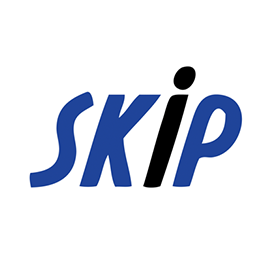自分の発明は「先行技術」であると明細書に記載しても先行技術の自認にならない(MPEP2129)
2010.08.25

SKIP
米国の明細書をドラフトする際には、「prior art」(先行技術)という用語の使用を避けるのが一般的です。これは、米国では、実際は米国特許法に従えば先行技術とならないものであっても、出願人が「先行技術」であると述べたものが先行技術として取り扱われることに由来しています。
このような実務の根拠となっているのは、以下のMPEP2129の規定です。
以下の規定によれば、prior artとして取り扱われるのは他人(another)による発明を先行技術として記載した場合であり、自己の発明については、先行技術になりません。
Jepsonクレームのpreambleに記載した事項も先行技術の自認であると判断される可能性がありますが、これも同様で、自分の発明については先行技術の自認になりません。
また、IDSで文献を提出したことも、先行技術の自認にはならないとも記載されています。
2129 Admissions as Prior Art [R-6] – 2100 Patentability
2129 Admissions as Prior Art [R-6]
I. ADMISSIONS BY APPLICANT CONSTI-TUTE PRIOR ART
A statement by an applicant >in the specification or made< during prosecution identifying the work of another as “prior art” is an admission **>which can be relied upon for both anticipation and obviousness determinations, regardless of whether the admitted prior art would otherwise qualify as prior art under the statutory categories of 35 U.S.C. 102. Riverwood Int’l Corp. v. R.A. Jones & Co., 324 F.3d 1346, 1354, 66 USPQ2d 1331, 1337 (Fed. Cir. 2003); Constant v. Advanced Micro-Devices Inc., 848 F.2d 1560, 1570, 7 USPQ2d 1057, 1063 (Fed. Cir. 1988).< However, even if labeled as "prior art," the work of the same inventive entity may not be considered prior art against the claims unless it falls under one of the statutory categories. Id.; see also Reading & Bates Construction Co. v. Baker Energy Resources Corp., 748 F.2d 645, 650, 223 USPQ 1168, 1172 (Fed. Cir. 1984) ("[W]here the inventor continues to improve upon his own work product, his foundational work product should not, without a statutory basis, be treated as prior art solely because he admits knowledge of his own work. It is common sense that an inventor, regardless of an admission, has knowledge of his own work.").
Consequently, the examiner must determine whether the subject matter identified as “prior art” is applicant’s own work, or the work of another. In the absence of another credible explanation, examiners should treat such subject matter as the work of another.
II. DISCUSSION OF PRIOR ART IN SPECI-FICATION
Where the specification identifies work done by another as “prior art,” the subject matter so identified is treated as admitted prior art. In re Nomiya, 509 F.2d 566, 571, 184 USPQ 607, 611 (CCPA 1975) (holding applicant’s labeling of two figures in the application drawings as “prior art” to be an admission that what was pictured was prior art relative to applicant’s improvement).
III. JEPSON CLAIMS
Drafting a claim in Jepson format (i.e., the format described in 37 CFR 1.75(e); see MPEP § 608.01(m)) is taken as an implied admission that the subject mater of the preamble is the prior art work of another. In re Fout, 675 F.2d 297, 301, 213 USPQ 532, 534 (CCPA 1982) (holding preamble of Jepson-type claim to be admitted prior art where applicant’s specification credited another as the inventor of the subject matter of the preamble). However, this implication may be overcome where applicant gives another credible reason for drafting the claim in Jepson format. In re Ehrreich, 590 F.2d 902, 909-910, 200 USPQ 504, 510 (CCPA 1979) (holding preamble not to be admitted prior art where applicant explained that the Jepson format was used to avoid a double patenting rejection in a co-pending application and the examiner cited no art showing the subject matter of the preamble). Moreover, where the preamble of a Jepson claim describes applicant’s own work, such may not be used against the claims. Reading & Bates Construction Co. v. Baker Energy Resources Corp., 748 F.2d 645, 650, 223 USPQ 1168, 1172 (Fed. Cir. 1984); Ehrreich, 590 F.2d at 909-910, 200 USPQ at 510.
IV. INFORMATION DISCLOSURE STATEMENT (IDS)
Mere listing of a reference in an information disclosure statement is not taken as an admission that the reference is prior art against the claims. Riverwood Int’l Corp. v. R.A. Jones & Co., 324 F.3d 1346, 1354-55, 66 USPQ2d 1331, 1337-38 (Fed Cir. 2003) (listing of applicant’s own prior patent in an IDS does not make it available as prior art absent a statutory basis); see also 37 CFR 1.97(h) (“The filing of an information disclosure statement shall not be construed to be an admission that the information cited in the statement is, or is considered to be, material to patentability as defined in § 1.56(b).”).



